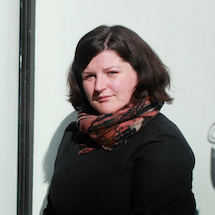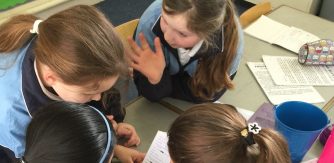Blog 2 – Kate Heffernan, Writer

Peat

Kate Heffernan is a writer who hasn't always been a writer. She has worked as an independent producer, a designer, and an editor, and these things shape and inform her work. Her first play, In Dog Years I’m Dead (MIRARI Productions) was a winner of the 2013 Stewart Parker Trust’s Emerging Playwright Award. An Associate Artist and close collaborator with Theatre Lovett, she is also the writer, designer and editor of their acclaimed show programme series for young audiences. Kate is currently under commission with Mermaid Arts Centre, writing Live at The Montague, a new performance that explores the histories of a former hotel and country-music venue in her hometown now turned Direct Provision centre. Kate is an Arts Council Next Generation Artist 2017. In 2015, Kate received a bursary from the Arts Council to research and explore her project Peat with young audiences, a performance text for 9-12 year olds, which began as an exploration of the extinct giant Irish deer. You can follow the progress of Peat and Kate's other work at www.kateheffernan.ie
Peat began as an impulse to explore a story and a history for a specific audience, and an impulse to rigorously develop my writing for young audiences.
After an initial workshop focus on story, storytelling and myth, I returned to Third Class in Sacred Heart Portlaoise to ask them to think about stories for the stage. The conversations that emerged from sharing, re-sharing and changing stories had sparked discussion around memory, history, shared stories, becoming a character, and who in society has permission to speak on behalf of another.
Here, these opened into a discussion on theatre – beginning with a discussion about the roles, responsibilities and skills of writers, directors, actors, designers. We talked: about how playwright meant playmaker; about beginnings, middles and endings; about storytelling versus drama; about dialogue versus monologue, narration versus conversation; about sets, costumes, props; about audience interaction and fourth walls.
Towards the end of that workshop, groups had debated and settled on one personal story that would become the story of their group. Focusing on collaboration, armed with script samples prepared by teacher Jennifer Buggie, groups were tasked with transforming this text into a story for the stage.
Working effectively in the classroom was a learning curve. I was finding my feet, and the support, expertise and enthusiasm of collaborating teacher Jennifer Buggie was invaluable. At the end of the series of workshops, in thinking about my practice, Jennifer and I have discussed building on this relationship, discussing future projects, interrogating the approach in order to refine and improve the quality of engagement.
Experiences in the classroom greatly informed the next stage of development – ideas around agency, voice, engagement, emotion, depth. In June 2016, with the support of The Ark A Cultural Centre for Children, I spent a week developing the text with director Maisie Lee and performers Nyree Yergainharsian and Lloyd Cooney. As development progressed and continues to progress, through working directly with young audiences, the elk itself started to take a back seat. The bigger questions about life and death that had lingered below the surface were grounded by experiences in the classroom at Sacred Heart.
The text which began to emerge is a sort of metaphysical conversation rooted in the world and perspective of two 12 year olds. On a peatland plain on the edge of an island, a boy and girl meet to bury a cat in its preserving earth. As they sit and dig the boggy grave, what follows is a conversation about life, fate, extinction, migration, mortality.
After four days, we shared a 15-minute piece with The Ark’s Children’s Council, in what was their first experience of a work-in-progress presentation. The responses of these 11-year old Council members were frank – they told us exactly what from their point of view worked and didn’t, what was engaging, what was funny, what was moving.
They responded enthusiastically to the characters use of the Would You Rather? game, answering the questions the characters posed to each other for themselves (some silently, some aloud, some later that day). From the beginning, and throughout the work in the classroom, I wanted Peat to try and equalise the relationship between stage and audience, to create in its audience the urge to enter the space, to engage in conversation with the characters, to find out more. Following the Council’s feedback, Would you Rather? remains a key structuring device.
The following month, we presented this work-in-progress showing of Peat at On the Edge World Festival of Theatre for Young Audiences in Birmingham to an audience of artists, producers and presenters.
Development continues in 2017.
Initial development was enabled by the Arts Council’s Young People Children and Education Bursary. Development in 2016 was supported by The Ark A Cultural Centre for Children. With the support of The Ark, Theatre for Young Audiences Ireland and Culture Ireland, a work-in-progress showing was presented at On the Edge Birmingham, the World Festival of Theatre for Young Audiences (directed by Maisie Lee, performed by Lloyd Cooney and Nyree Yergainharsian)

Elk skeleton at the Dead Zoo, Dublin
